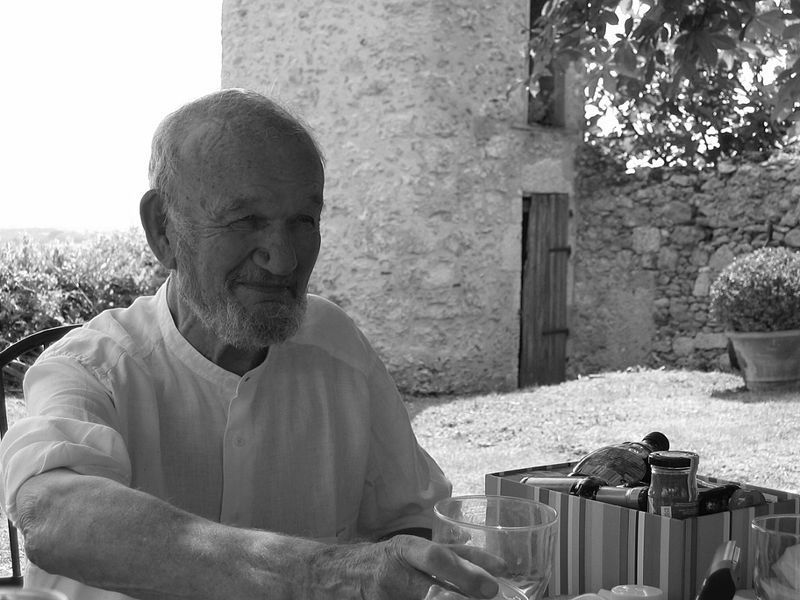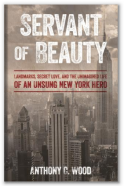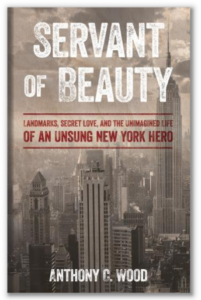
Norval White
Norval White was an architect, architectural historian, and preservationist who co-authored the AIA Guide to New York City and was founding chairman of AGBANY.
Norval White was born on June 12, 19261 on the Upper East Side of Manhattan, where he also spent his childhood.2 White graduated with his bachelor’s degree from the Massachusetts Institute of Technology in 1949 and received an MFA in Architecture from Princeton University in 1955.3 White also studied architecture in France at the Fontainebleau Schools.4 With the exception of his studies abroad, White lived most of his life in New York City, primarily in Brooklyn Heights.5
In the early 1960s, White’s professional architectural career and his personal passion for architectural preservation converged. He helped found, and became the first chairman of, the Action Group for Better Architecture in New York (AGBANY) in 1962 with the primary mission of preserving Pennsylvania Station. White was committed to working against potentially harmful urban planning practices in the city, a mission he refused to abandon despite facing setbacks.6
Early in his career, White taught architectural design at The Cooper Union, and worked at the firms Levien Deliso White & Songer and Gruzen Samton.7 In 1968, White became the founding chairman of the City College School of Architecture and Environmental Studies. That same year, White co-authored, with Elliot Willensky, the first edition of the AIA Guide to New York City, based on a guide they had produced for the 1967 AIA convention in New York City. He eventually would co-author five editions of the Guide, in addition to writing other books on architecture and New York.8 In his architectural practice, White designed a number of buildings within historic districts, with a focus on fitting the design vocabulary into the context of the area.9
White had four sons with his first wife Joyce, though they later divorced. He remarried in 1992 to Camilla Crowe.10 A year later, the couple moved to Roques, France, where White resided until his death on December 26th, 2009.11
Action Group for Better Architecture in New York
Chair
City College School of Architecture and Environmental Studies
Founding Chairman
American Institute of Architects
Young Architects Committee, Chairman
Norval White was active in New York City architectural circles not simply as a professional voice, but additionally--and eventually most prominently--as a preservation activist. However, he became known for designing two large houses in Tenafly, New Jersey.12 One, the Seiden House, was featured in an issue of Progressive Architecture Magazine.13 White’s work on the River Vale Country Club in River Vale, New Jersey was also noted in an Architectural Forum article highlighting up-and-coming young architects.14 He ran his own architectural practice with colleague Charles Evans Hughes III from an office on East 61st Street in Manhattan, a space which he would also use to hold meetings of the Action Group for Better Architecture in New York.15 In 1962, White began organizing this loose collective of young architects in response to the looming threat posed to the historic Pennsylvania Station building.16
Pennsylvania Station, first opened in November 1910,17 was designed by McKim, Mead, and White in a lofty, Beaux-Arts style with a large, classical colonnaded facade.18 But the Pennsylvania Railroad, which owned and ran the station, had fallen millions of dollars into debt, and tearing down the building, combined with the redevelopment of the surrounding area, was allegedly going to help the company cut losses.19 AGBANY formed out of a desire to prevent this demolition from taking place. Other organizations, such as the American Institute of Architects and the Municipal Art Society, also expressed their opposition to leveling the station.20 Although White was a member of both groups, he and AGBANY believed that not enough was being done to save the structure.21 As a result, the architects took to the streets, notably picketing in front of Penn Station on August 2, 1962, a watershed action that drew attention to the destruction of a historic building and provided a model for future preservation protests.22
In September 1962, White and other members of AGBANY, MAS, and the AIA met with Mayor Wagner to protest the demolition of the station.23 White continued to make his case while testifying at a City Planning Commission hearing on January 3, 1963. The hearing addressed the zoning permit needed to erect Madison Square Garden on the land where Penn Station was facing imminent demolition.24 White argued that because the city had sold the land to the Pennsylvania Railroad in the first place, the land should be returned to the city for public use as opposed being sold for commercial use.25
Despite the efforts by White and AGBANY, demolition of Penn Station began on October 28, 1963.26 AGBANY did not continue to be an organized group past its push to save Penn Station, but members, including White, continued to attempt to preserve other historic buildings in New York City later in the 1960s. As the chair of the executive committee of the AGBANY, he helped lead attempts to preserve several other historic buildings in New York City later in the 1960s.27 Informally, members of AGBANY marched to save the Savoy-Plaza Hotel and the Brokaw Mansion.28 White advocated against the “ABC plan,” a proposal in 1964 to construct a new Civic Center south of Chambers Street which would have required the demolition of a number of existing structures, including the Tweed Courthouse.29
- Oral History with Norval White
- New York Preservation Archive Project
- 174 East 80th Street
- New York, NY 10075
- Tel: (212) 988-8379
- Email: info@nypap.org
- Remembering Norval White, FAIA
- AIA New York | Center for Architecture
- 536 LaGuardia Place
- New York, NY 10012
- Tel: (212) 683-0023
- Email: info@aiany.org
- David W. Dunlap, “Norval White, of AIA Guide, Dies at 83,” The New York Times, 30 December 2009.
- White, Norval, et al. AIA Guide to New York City. 5th ed., Oxford University Press, 2010.
- “Memorial: Norval White *55,” Princeton Alumni Weekly, 7 April 2010.
- Dunlap, “Norval White, of AIA Guide, Dies at 83” and Norval White, oral history interview, 20 April 2006, transcript, NYPAP.
- Anthony C. Wood, Preserving New York: Winning the Right to Protect A City’s Landmarks (New York: Routledge, 2008), 297.
- Richard Dattner, “Norval White, an Appreciation and Some Memories,” Architecture Newsletter, 15 January 2010.
- Dunlap, “Norval White, of AIA Guide, Dies at 83.”
- Wood, Preserving New York, 297.
- White, interview transcript.
- Dunlap, “Norval White, of AIA Guide, Dies at 83.”
- White, Norval, et al. AIA Guide to New York City. 5th ed., Oxford University Press, 2010.
- White, interview transcript.
- Ibid.
- Ibid.
- Ibid.
- Wood, Preserving New York, 296.
- Ibid, 310.
- Ibid, 302-305.
- Ibid, 295
- “An Oral History Interview with Norval White,” New York Preservation Archive Project, 20 April 2006.
- Ibid
- Wood, Preserving New York, 297.
- “Action Group for Better Architecture in New York” NYPAP, accessed 10 July 2020. http://www.nypap.org/preservation-history/agbany/
- White, interview transcript
- Ibid.
- Wood, Preserving New York, 301.
- White, interview transcript.
- Peter Samton, interviewed by Kelly Carroll, 16 July 2014, transcript, New York Preservation Archive Project. http://www.nypap.org/oral-history/peter-samton/
- White, interview transcript and Ada Louise Huxtable, “54-Story Building Planned for Civic Center,” The New York Times, 21 April 1964.




